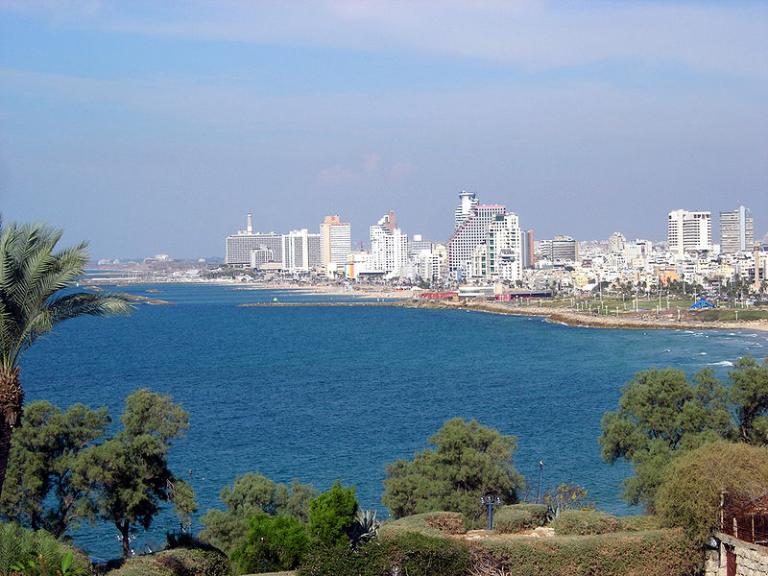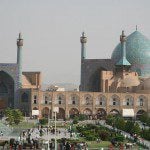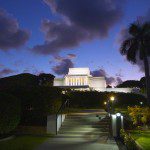
I’m very happy to report that it is now possible for you to order (or to pre-order) the forthcoming Interpreter Foundation film Undaunted: Witnesses of the Book of Mormon through Deseret Book:
https://deseretbook.com/p/undaunted?queryID=1528e0ef254a335421fef178505acd0b&variant_id=199590-dvd
It will be available on 24 May 2022.
***
It’s good to be back in Israel for the first time, thanks to the enforced COVID travel restrictions, in at least two but maybe even three years.
Travelers arriving at Israel’s David Ben Gurion International Airport — which is relatively near to Tel Aviv and which is commonly called “Tel Aviv Airport” by travelers but isn’t, strictly speaking, in that city — are often deadly tired and not feeling especially curious. Even when their flight hasn’t been delayed several hours, as ours was on visit a few years ago, on top of a day of cancellations and delays.
And, truth be told, although the airport is far, far better than it was when I first came here in January 1978, it still doesn’t seem unusually interesting or historical.
Sometimes, though, it’s referred to as “Lod Airport,” after the town — slightly more than nine miles from Tel Aviv — in which it actually sits. And Lod, while certainly not a site of the first rank, is of some noteworthy biblical and historical significance, which is almost never mentioned by guides or noticed by tourists.
For one thing, Lod is the biblical Lydda:
32 As Peter traveled about the country, he went to visit the Lord’s people who lived in Lydda. 33 There he found a man named Aeneas, who was paralyzed and had been bedridden for eight years. 34 “Aeneas,” Peter said to him, “Jesus Christ heals you. Get up and roll up your mat.” Immediately Aeneas got up. 35 All those who lived in Lydda and Sharon saw him and turned to the Lord.
36 In Joppa there was a disciple named Tabitha (in Greek her name is Dorcas); she was always doing good and helping the poor. 37 About that time she became sick and died, and her body was washed and placed in an upstairs room. 38 Lydda was near Joppa; so when the disciples heard that Peter was in Lydda, they sent two men to him and urged him, “Please come at once!”
39 Peter went with them, and when he arrived he was taken upstairs to the room. All the widows stood around him, crying and showing him the robes and other clothing that Dorcas had made while she was still with them.
40 Peter sent them all out of the room; then he got down on his knees and prayed. Turning toward the dead woman, he said, “Tabitha, get up.” She opened her eyes, and seeing Peter she sat up. 41 He took her by the hand and helped her to her feet. Then he called for the believers, especially the widows, and presented her to them alive. 42 This became known all over Joppa, and many people believed in the Lord. 43 Peter stayed in Joppa for some time with a tanner named Simon. [Acts 9, in the New International Version]
And this story, in turn, sets up the epochal revelation narrated in Acts 10, which authorizes the taking of the Gospel to the Gentiles — and which allowed Christianity to be transformed from a Jewish sect into a world religion.

(Wikimedia Commons publiv domain image)
Lydda or Lod is mentioned more than once in the Bible (e.g., at 1 Chronicles 8:12; Ezra 2:33; Nehemiah 7:37; 11:35), although its earliest known written notice occurs in a fifteenth-century BC list of Canaanite towns inscribed on the wall of Upper Egypt’s Karnak Temple at the order of the Eighteenth Dynasty Pharaoh Thutmose III. In the sixth century AD, it was briefly known as “Georgiopolis,” after St. George, who was born in it in the third century and who later went on to serve as a member of the imperial guard of the Roman ruler Diocletian.
The place has had a rather tempestuous history. In 43 BC, the Roman governor of Syria sold its residents into slavery, but, two years later, they were freed by Mark Antony. Then, in 66 AD, during the First Jewish Revolt, the town was completely destroyed and, in AD 68, its site was occupied by the forces of the future Emperor Vespasian. During the so-called “Kitos War,” which lasted from 115-117 AD, many Jews gathered in the city . . . only to be massacred by Roman forces; the Talmud specifically memorializes “the slain of Lydda.”
An Islamic hadith or tradition attributed to the Prophet Muhammad identifies Lod/Lydda as the future site of the battle where al-Dajjal, the “Deceiver” or Antichrist, will be killed as part of the events of the Last Days. In fact, the well-known tenth-century geographer al-Maqdisi or al-Muqaddasi — as his name suggests, he was born in Jerusalem; Jerusalem is commonly referred to in Arabic as al-Quds (“the Holy”) and, rather less frequently, as Bayt al-Maqdis (“the Holy House,” remembering the Temple) — specifically identified a space in front of the city’s Church of St. George as the place where the arch-deceiver would die.
It’s easy, in the hectic pressure of gathering up luggage and finding a taxi while suffering from severe jet lag and, now, while undergoing a mandatory COVID test upon entry, to overlook such things.
***
Whatever else one thinks of Israel, whatever one’s politics, Mark Twain asks a marvelous question here, one that is worthy of reflection. And please recall that he wrote many years before the establishment of the modern state of Israel and long before the disproportionate number of Jewish Nobel Prize-winners became too obvious to ignore:
If statistics are right, the Jews constitute but one percent of the human race. It suggests a nebulous dim puff of stardust lost in the blaze of the Milky Way. Properly, the Jew ought hardly to be heard of, but he is heard of, has always been heard of. He is as prominent on the planet as any other people, and his commercial importance is extravagantly out of proportion to the smallness of his bulk. His contributions to the world’s list of great names in literature, science, art, music, finance, medicine, and abstruse learning are also away out of proportion to the weakness of his numbers. He has made a marvelous fight in this world, in all the ages; and has done it with his hands tied behind him. He could be vain of himself, and be excused for it.
The Egyptian, the Babylonian, and the Persian rose, filled the planet with sound and splendor, then faded to dream-stuff and passed away; the Greek and the Roman followed; and made a vast noise, and they are gone; other people have sprung up and held their torch high for a time, but it burned out, and they sit in twilight now, or have vanished. The Jew saw them all, beat them all, and is now what he always was, exhibiting no decadence, no infirmities of age, no weakening of his parts, no slowing of his energies, no dulling of his alert and aggressive mind. All things are mortal but the Jew; all other forces pass, but he remains. What is the secret of his immortality?
A believer, I think, might justifiably see something more than earthly here.
Posted from Tel Aviv, Israel












